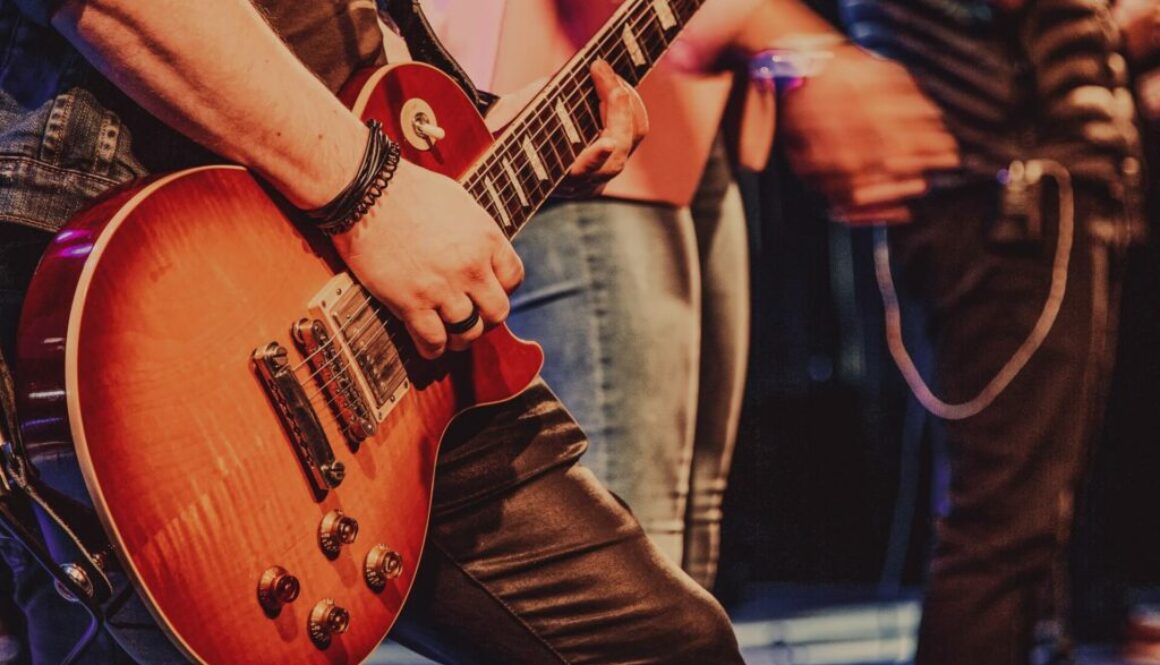What Are ‘Power Chords’?

It’s time to talk power chords – what they are, how to play them, the theory/how they’re formed and ultimately, how to use them. Maybe you already play power chords but don’t know the theory behind them or where they come from. Or maybe you’ve never even heard the name before. Or perhaps you sort of know what you’re doing with them, but need to brush up and get it nailed down. Whatever your situation and current understanding of power chords, hopefully this article will help. Good luck, and enjoy!
What Is A Power Chord?
A power chord is a 2-note chord made up of a root note and a fifth. A ‘power chord’ is technically called a 5 chord, e.g. C power chord would be written as ‘C5’, E power chord as ‘E5’ and so on.
How Do You Play A Power Chord?
Take a look at these diagrams for a C power chord, or C5 chord. If you take a look at some other power chords from the chord library, you’ll notice that just like with scales, barre chords etc, the essential shape remains the same, all that changes is which note you start from i.e. Which note is your root note.
Take any note on the E (6th), A (5th) and D (4th) strings, and call that your root note (i.e. The note that gives the chord its letter name). From there, add your fifth, which is always to be found on the next string, 2 frets up.
Hopefully that explains it clearly – If not, refer to the chord diagrams linked above and you’ll see how it works.
What’s The Theory?
A power chord is neither major nor minor. This is because major and minor chords are made of 3 notes (root, third, fifth), and the one that makes a chord major or minor (the third) is the one that is not present in a power chord (which is made of just 2 notes – root and fifth)
In practice, let’s look at the C major scale:
| I | II | III | IV | V | VI | VII |
| C | D | E | F | G | A | B |
A C major chord would be made of:
I, III, V = C, E, G
A C power chord (or C5) would be made of just:
I, V = C, G.
Although this comes from the C major scale, this C power chord, in isolation, could not be identified as major by even the most experienced musical ear – because it simply, technically, isn’t. There is not enough information to identify it as such – that is all contained in the ‘missing’ note (the 3rd).
Let’s look at the C minor scale for a moment:
| I | II | III | IV | V | VI | VII |
| C | D | Eb | F | G | Ab | Bb |
You’ll notice that the power chord (or C5) hasn’t changed and is still present. The I and V are still C and G. I and V are not where major and minor scales and chords differ. They differ at III, VI and VII. So whereas constructing the ‘full’ chord, using I, III and V, does now present a difference with a C minor (due to the III = Eb) rather than a C major, the power chord (or C5) is unchanged.
How To Use Them?
This ability to use power chords in place of both major and minor chords, plus their relative simplicity to play, means that power chords are very all-purpose solutions, popular with beginners or in deliberately simplistic, effective guitar parts and styles.
Stylistically, they’re synonymous with distorted electric guitars in rock, heavy rock/heavy metal and metal music, but are also at home in big pop ballad choruses or punk guitar parts.
Alex Bruce is a writer for Guitar Tricks and 30 Day Singer
